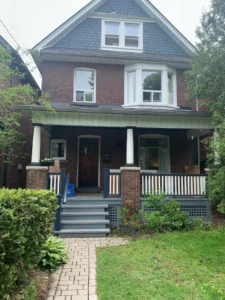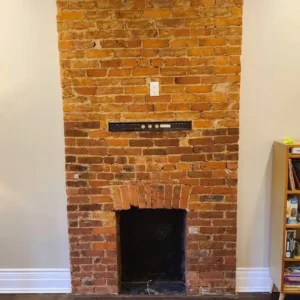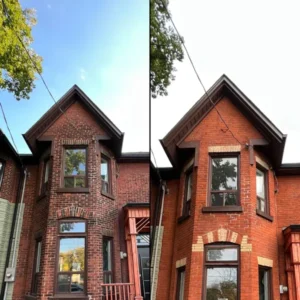
Carbon staining and mortar splatter are two of the most common masonry stains/debris found on brick. Both are extremely different from each other and require specific cleaning solutions and proper site preparation in order for them to be cleaned properly and safely.
Carbon staining is caused by decades of carbon being deposited onto the brick from air pollutants. It can be identified as a matte black brick stain coating on the bricks. Luckily, it only requires cleaning every 30-50 years. Cleaning exterior brick stain is a very specialized process, as the cleaning solutions used are highly corrosive and dangerous. The cleaning solutions used to remove carbon can burn plants, etch windows, tarnish metallic surfaces, and strip paint. Proper covering of plants, windows, doors, etc, is vital to reducing the risk of damage while cleaning carbon. This all being said, removing carbon staining from bricks is hands down the most rewarding exterior makeover possible. It will completely restore your home to its former glory and bring it back to life.
Mortar splatter is the mortar spillage left on the bricks after the bricks have been laid, re-pointed or added, or replaced. Mortar splatter resembles dollops or smears of concrete on the brick. Although mortar splatter is an eye soar the removal of mortar splatter is completely cosmetic. However if not treated early the mortar splatter can become more challenging to remove. Removal is relatively straightforward when using the right cleaning solution with the right dilution. The cleaning solution used to remove mortar splatter is highly corrosive and will burn plants, remove paint, and tarnish metallic surfaces; however, it will not affect windows! It is recommended to do the wash as soon as the brickwork has been done to avoid additional prep costs.
Brick Wash has trained professionals with over 20 years of experience in brick cleaning. Contact us today!



